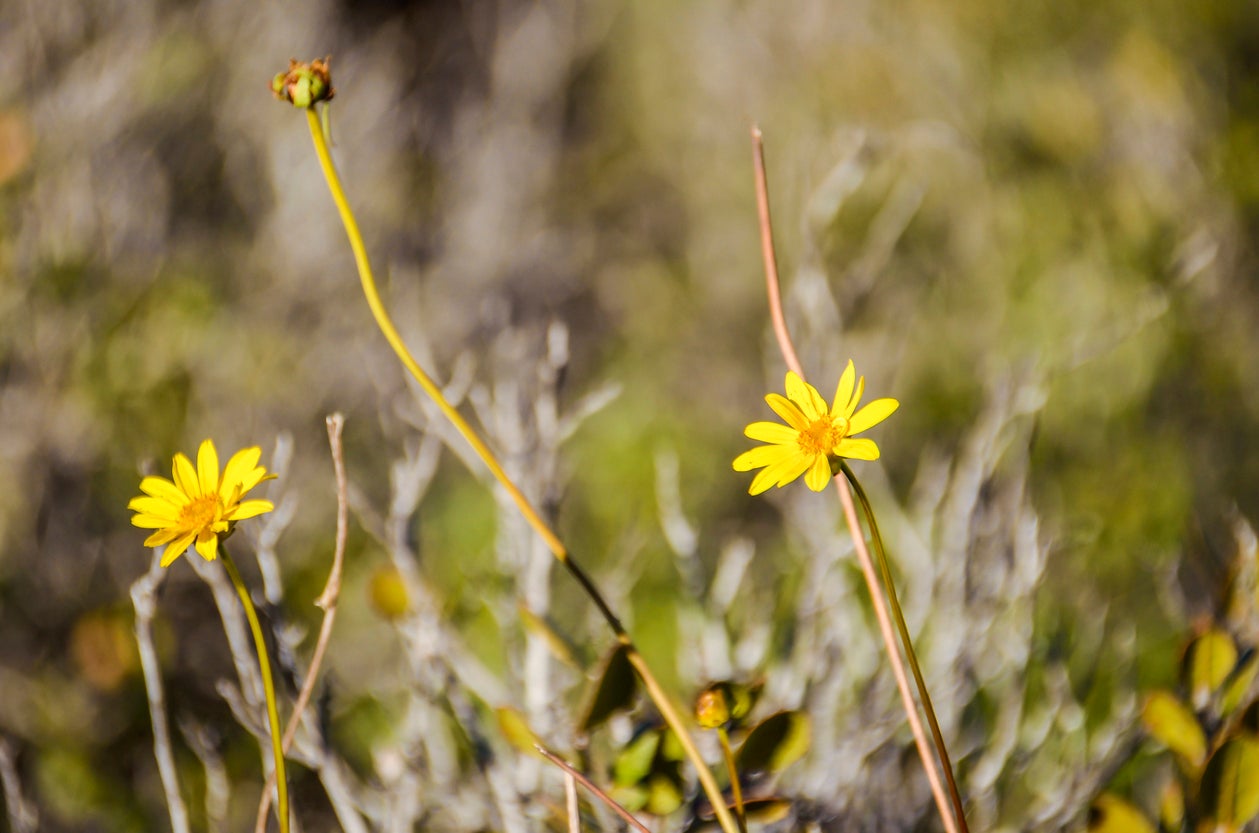Desert Sunflower Info: Learn About Hairy Desert Sunflower Care


Hairy desert sunflowers have been tagged with a rather unappealing name, but the yellow, daisy-like blooms with bright orange centers are anything but dull. They are actually named for the hairy, greenish grey leaves. Interested in learning more about this tough desert plant? Want to learn how to grow desert sunflowers? (It’s easy!) Read on for more desert sunflower information.
Desert Sunflower Info
Hairy desert sunflowers (Geraea canescens) are common across much of the southwestern United States and northern Mexico. This robust wildflower is happiest in sandy or gravelly desert conditions. Also known as desert gold, desert sunflower plants generally bloom in January and February, with sporadic reappearances in October and November. They are among the very first annual wildflowers to bloom in spring. As its name suggests, hairy desert sunflower is a close cousin to the tall garden sunflower that we all know and love. It reaches heights of up to 30 inches (76 cm.). The plant is an important pollinator. Interestingly, it attracts one specific type of bee that depends solely on desert sunflower plants for pollen. The bee leaves the protection of its underground burrow just in time to take advantage of the blooms in early spring.
How to Grow Desert Sunflowers
There really isn’t much to growing desert sunflowers. Just plant seeds and keep the soil moist until they germinate. Late fall is the best time for planting desert sunflowers. Hairy desert sunflowers require full sun and, as mentioned above, they prefer poor, dry, gravelly or sandy soil. Once established, desert sunflower care is minimal, as the plant needs very little water, but does benefit from an occasional watering during the heat of summer. Desert sunflower plants require no fertilizer. Wildflowers often don’t survive in overly rich soil. Like most wildflowers, desert sunflower plants usually reseed themselves if conditions are right.
Gardening tips, videos, info and more delivered right to your inbox!
Sign up for the Gardening Know How newsletter today and receive a free copy of our e-book "How to Grow Delicious Tomatoes".

A Credentialed Garden Writer, Mary H. Dyer was with Gardening Know How in the very beginning, publishing articles as early as 2007.
-
 Looking For Plants To Give You The Soft And Fuzzies? Try These 5 Fuzzy Leaf Plant Options
Looking For Plants To Give You The Soft And Fuzzies? Try These 5 Fuzzy Leaf Plant OptionsLovers of texture, drama, silver foliage and tactile plants will adore these special sensory garden additions. These fuzzy leaf plant options will leave you all aglow
By Susan Albert
-
 Get Ready For A Summer Of Hummers! Grow These Full Sun Hummingbird Plants and Flowers
Get Ready For A Summer Of Hummers! Grow These Full Sun Hummingbird Plants and FlowersIf you’re lucky enough to enjoy a sunny backyard, make sure you are maxing out on your pollinator opportunities and grow these full sun hummingbird plants and flowers
By Tonya Barnett